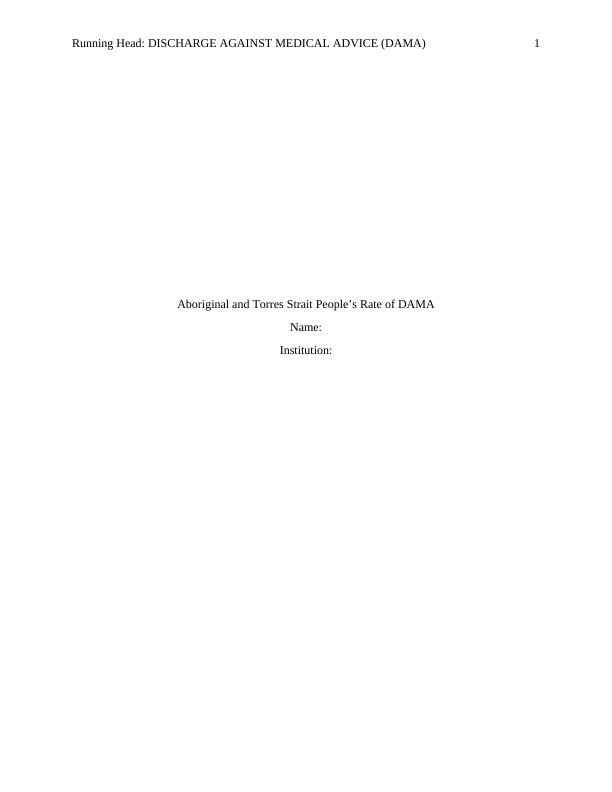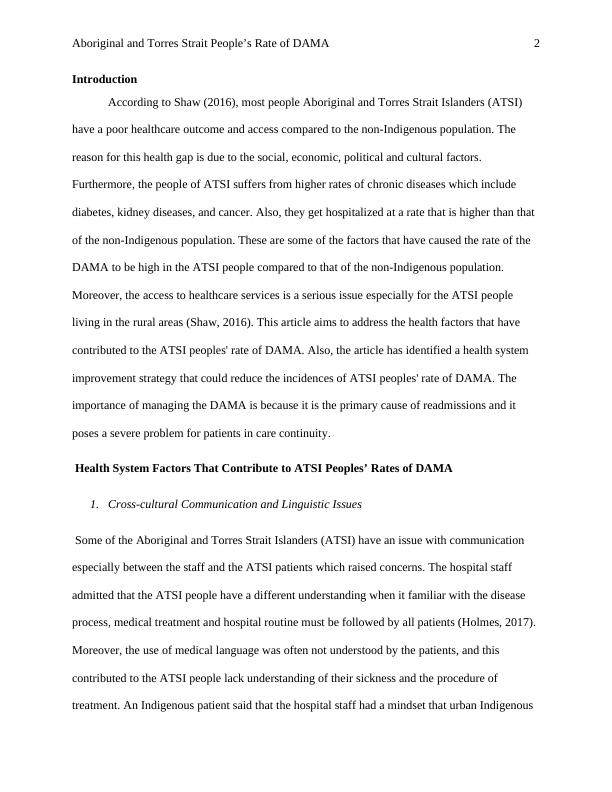Aboriginal and Torres Strait People’s Rate of DAMA
7 Pages1692 Words101 Views
Added on 2023-06-11
About This Document
This article discusses the factors contributing to the high rate of Discharge Against Medical Advice (DAMA) in Aboriginal and Torres Strait Islanders (ATSI) and identifies a health system improvement strategy that could reduce the incidences of ATSI peoples' rate of DAMA. The article addresses the essential factors that affect the healthcare system which has caused an increase in the DAMA of the Aboriginal and Torres Strait Islanders. Some of the critical issues identified include social and cultural factors where the family puts pressure on ATSI mothers to go back home and take care of their older babies.
Aboriginal and Torres Strait People’s Rate of DAMA
Added on 2023-06-11
ShareRelated Documents
End of preview
Want to access all the pages? Upload your documents or become a member.
Discharge against medical advice
|10
|2193
|99
Primary Healthcare in Aboriginal and Torres Strait Islanders
|11
|2901
|88
Ethics in Nursing Assignment 2022
|10
|1552
|16
Health issues in Gerontology
|10
|3000
|421
Nursing Care in Aboriginal and Torres Strait Islander.
|7
|2431
|35
Nursing Assignment | Rheumatic Heart Disease
|7
|1363
|58



